Fall often brings to mind vibrant visuals: crimson leaves, golden gourds, and cheerful mums. However, your garden offers far more than just a visual feast. Imagine stepping onto your balcony or patio and inhaling the crisp, spicy, earthy aromas that define autumn. You can create a unique “scent-scape” in your small container garden, transforming your outdoor space into an olfactory haven. This guide empowers you to design a fall sensory garden, emphasizing aromatic plants that thrive in pots, bringing the rich fragrance of the season right to your doorstep.
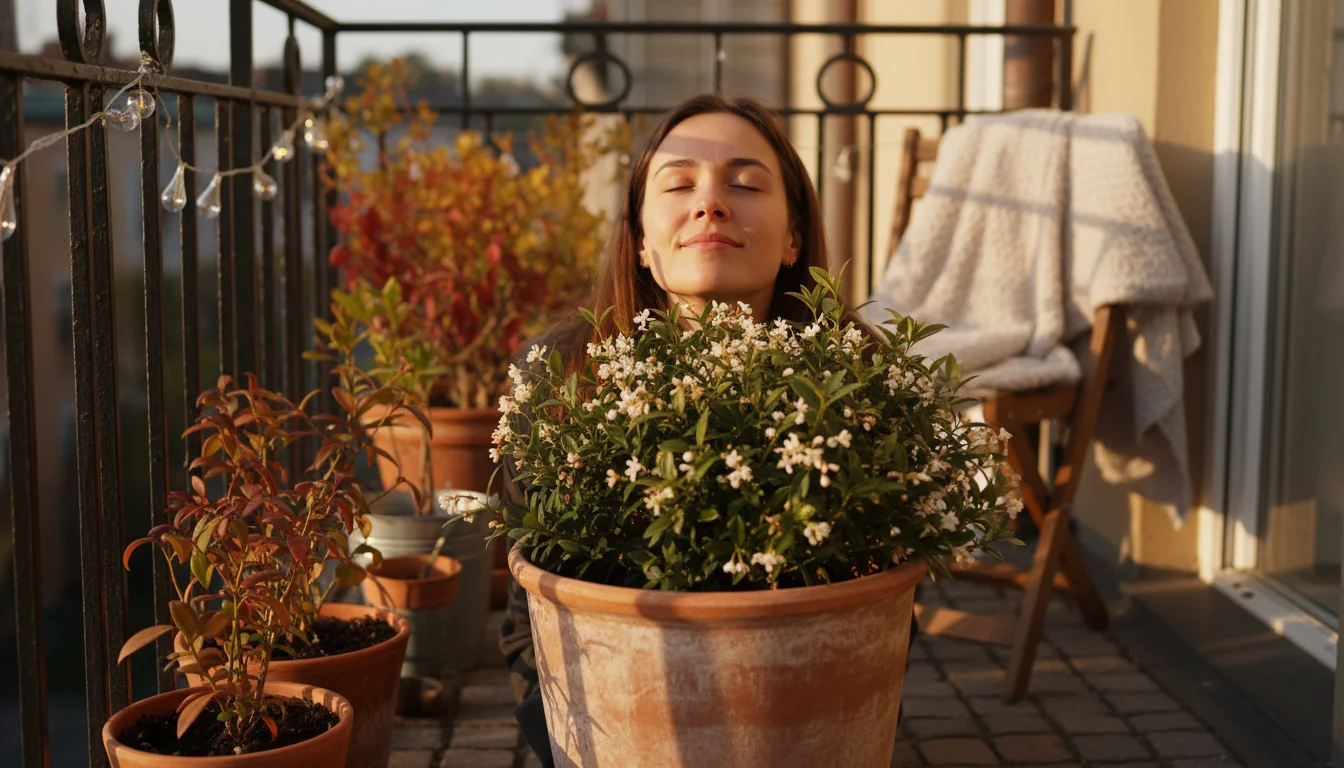
Understanding Your Fall Scent-scape
A “scent-scape” in gardening refers to a deliberate design where the primary focus lies on the aromas plants release, creating an immersive sensory experience. Unlike gardens primarily designed for visual appeal with vibrant colors and striking forms, a scent-scape prioritizes fragrance. For small spaces like balconies and patios, this approach offers an exciting, often overlooked dimension to gardening. You gain the ability to enjoy your outdoor area even with your eyes closed, simply by breathing in the rich tapestry of fall scents. This strategy proves particularly effective in limited areas because scent travels and permeates space efficiently, making even a few well-chosen aromatic plants incredibly impactful. You can achieve significant sensory enjoyment from a modest collection of containers.
Designing a fall sensory garden allows you to capture the distinct essence of the season. Think beyond the visual. Fall’s unique character emerges not only from its changing colors, but also from its specific smells: earthy decay, crisp air, woody notes, and the lingering spice of late-season herbs. By intentionally selecting container plants that smell good in fall, you invite this rich sensory experience into your home. This approach elevates your gardening, transforming a simple collection of pots into a dynamic, engaging environment that appeals to more than just your sight. You design an outdoor room where fragrance defines the atmosphere, creating a comforting and invigorating autumnal retreat.
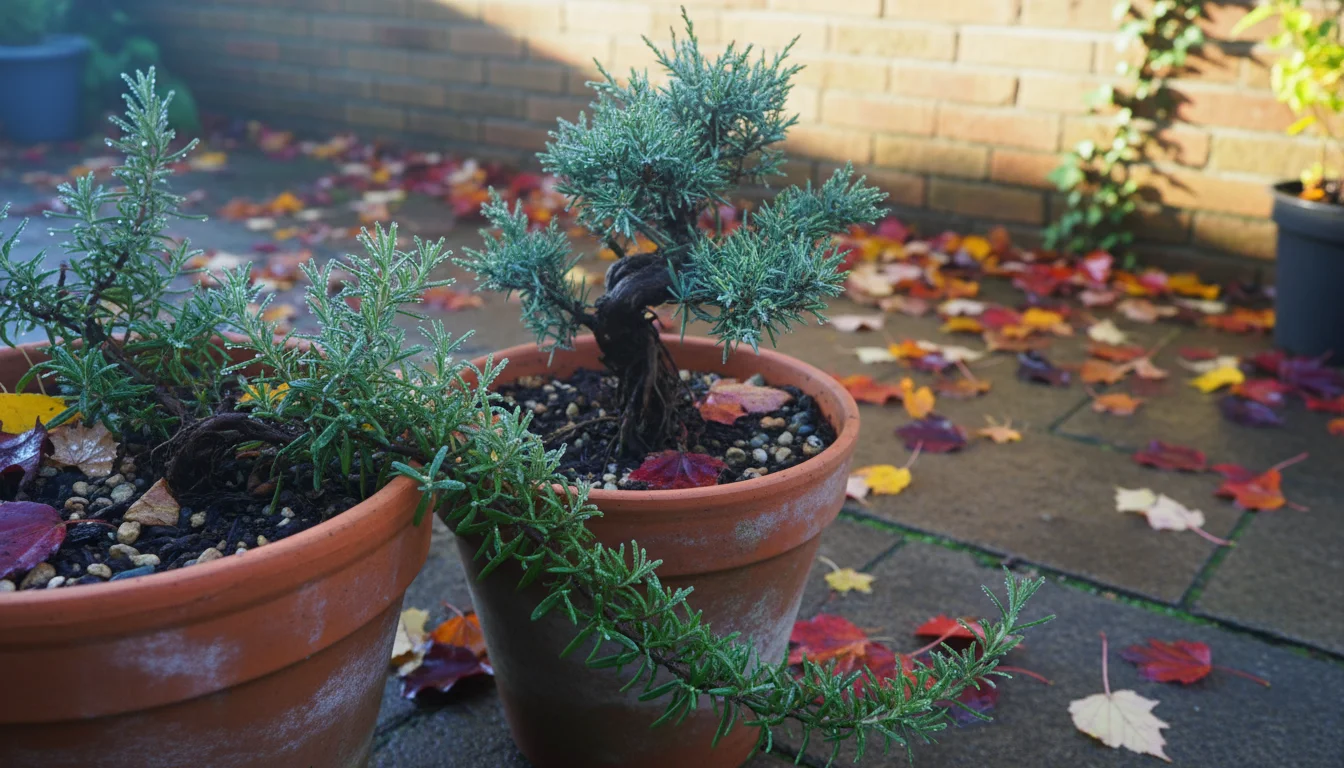
The Essence of Autumnal Aromas: What Does Autumn Smell Like in a Garden?
Consider the diverse olfactory palette of autumn. When you envision the smells of fall, what truly defines them in a garden setting? It goes beyond pumpkin spice. A real autumn garden evokes rich, complex aromas. You often encounter the earthy scent of damp soil and fallen leaves undergoing decomposition, a smell indicative of nature’s cycle. Resinous notes from evergreens, particularly pines and junipers, become more pronounced as the air cools. Woody undertones emanate from bark and branches, adding depth. Certain herbs release potent, often spicy or piney fragrances when temperatures drop or when you brush against their foliage. The crisp, clean scent of the air itself, often carrying hints of distant woodsmoke, also plays a significant role. Your fall sensory garden aims to recreate this complex symphony of aromas.
Your goal is to blend these elements in a fragrant container garden. You select plants contributing to these specific autumnal notes: the grounded earthiness, the fresh resin, the warm spice. For instance, plants like rosemary offer a strong, piney-spicy scent that perfectly complements the cool air. Certain types of sage provide an herbaceous, slightly peppery aroma. Dwarf conifers add that unmistakable evergreen freshness. By understanding what autumn smells like in a garden, you gain the ability to strategically choose plants that collectively build this desired aromatic profile in your small space. This thoughtful selection allows you to design a sensory experience that feels authentic and deeply connected to the season, moving beyond simple floral sweetness to a richer, more evocative autumnal bouquet.

Choosing Fragrant Fall Plants for Your Containers
Selecting the right aromatic plants forms the backbone of your fall scent-scape. Focus on plants known for their strong, appealing fragrances that tolerate cooler temperatures and container living. You need plants whose scent emanates from their foliage, or which produce late-season flowers with distinct perfumes. Here are top recommendations for growing herbs for autumn scent and other container plants that smell good in fall:
- Rosemary (Salvia rosmarinus, formerly Rosmarinus officinalis): This evergreen herb offers a potent, piney, camphoraceous scent. Its needle-like leaves release a strong aroma with just a gentle touch. Rosemary thrives in full sun and well-drained soil, making it an excellent candidate for fall sensory garden pots. Many varieties exist, from upright to trailing, offering versatility for different container sizes. You often find it maintaining its fragrance and form well into chilly weather, making it a reliable aromatic plant.
- Thyme (Thymus vulgaris and other species): Various thyme varieties present wonderful fall fragrances. Common thyme provides a classic herbaceous, slightly lemony aroma. Lemon thyme specifically offers a bright, citrusy note. Creeping thymes create beautiful aromatic ground cover in larger containers or spill over edges. Thyme generally needs full sun and good drainage. Its small leaves release scent when brushed or walked near, contributing a delicate yet persistent fragrance to your fragrant container garden.
- Sage (Salvia officinalis): Garden sage offers a robust, earthy, slightly peppery and medicinal scent. Its velvety, grayish-green leaves contribute textural interest to your fall sensory garden. Sage holds up well in containers and adds a strong, grounding aroma. You can find ornamental sages with purple or variegated foliage, adding visual appeal while maintaining their characteristic scent. Like rosemary and thyme, sage prefers full sun and well-drained conditions.
- Lemon Balm (Melissa officinalis): While often associated with summer, lemon balm can persist into early fall, especially in milder climates. Its bright, lemony fragrance is invigorating and uplifting. You find it performs best in partial to full sun. Crushing the leaves releases its delightful aroma. Keep in mind that lemon balm can spread readily in garden beds, but containers effectively manage its growth, preventing it from overwhelming smaller spaces.
- Scented Geraniums (Pelargonium species): These are not “true” geraniums but offer an incredible array of scents: rose, lemon, mint, chocolate, apple, and even nutmeg. Their leaves, when brushed, release these distinct fragrances. Scented geraniums prefer full sun and well-drained soil. While some might not withstand hard frosts, many tolerate cooler fall temperatures and provide consistent aromatic interest until a deep freeze. You can easily bring them indoors for winter in colder regions, allowing you to extend their aromatic joy.
- Chrysanthemums (Hardy Varieties): While many mums offer visual beauty, certain varieties possess a distinct, slightly spicy or earthy fragrance, particularly from their foliage. Seek out heirloom or less common varieties known for their aromatic qualities. You might need to visit a local nursery and gently rub the leaves to test their scent. These plants offer both visual autumnal cheer and a subtle, authentic fall scent. Ensure they receive adequate sunlight and consistent moisture in containers.
- Dwarf Conifers (e.g., Dwarf Alberta Spruce, Mugo Pine, Juniper varieties): These plants offer the quintessential “piney” or “resinous” smell of a fall forest. Their evergreen needles release a clean, fresh, often sharp aroma, especially on crisp autumn days. Dwarf conifers provide excellent structure and year-round interest in your fragrant container garden. You select smaller, slow-growing varieties suitable for containers, ensuring they have good drainage and remain consistently watered. They add a woody, grounding element to your fall sensory garden.
- Pansies and Violas (Scented Varieties): Some pansies and violas, especially the smaller ‘Johnny Jump-ups’ or specific viola varieties, carry a sweet, delicate, sometimes vanilla-like scent. While not as robust as herbs, their charming presence and subtle fragrance contribute to the overall appeal of a fall sensory garden. They tolerate cool weather and even light frosts, continuing to bloom and offer their gentle perfume for an extended period.
When selecting your plants, remember to consider their individual light and watering needs. Group plants with similar requirements in the same container to simplify care. You will maximize your success and extend the life of your aromatic display by ensuring compatible conditions.
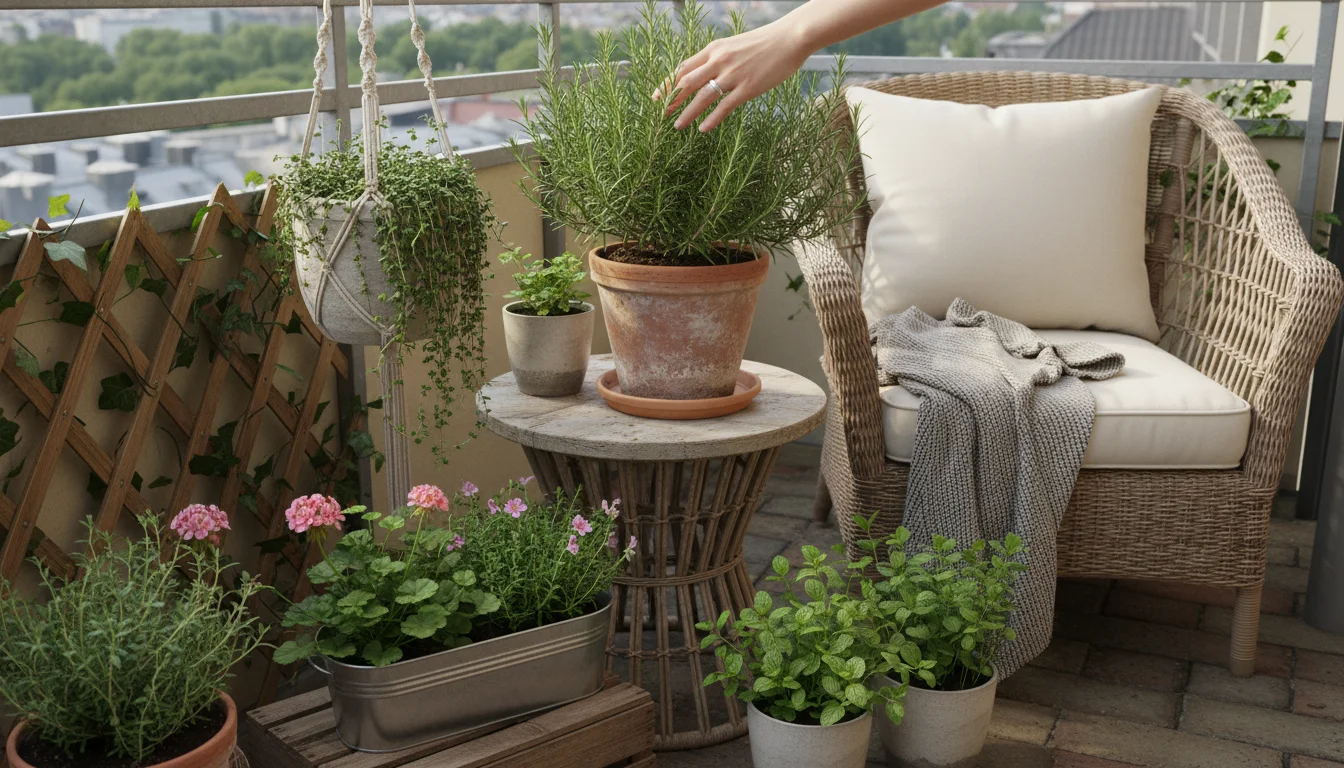
Crafting Your Aromatic Layout: Design Principles for Scent-scapes
Designing for scent differs from designing solely for sight. You want to place plants where their fragrance becomes most accessible and impactful. Consider both direct interaction and ambient scent diffusion. For small container gardens, strategic placement is key to an effective fall sensory garden.
- Proximity is Power: Place your most fragrant plants closest to where you sit, walk, or brush past. You want to easily interact with rosemary, thyme, or scented geraniums. Consider placing them on a small table next to your favorite chair or along the edge of your balcony railing. This maximizes direct interaction and ensures you receive the strongest burst of fragrance.
- Layering Scents: Think about how different scents blend. You can create layers of aroma, much like a perfume. Group complementary scents together. For example, combine the piney notes of rosemary with the earthy spice of sage for a robust aroma. A delicate lemon balm or scented viola can offer a lighter, higher note to this deeper foundation. Avoid too many clashing, strong scents in one small area, as they can become overwhelming. Instead, focus on a few dominant aromas, with subtle supporting notes.
- Utilize Vertical Space: Balconies and patios often offer vertical dimensions. You can hang containers with trailing aromatic plants like creeping thyme or mint (if you control its growth). Vertical planters can hold a variety of herbs, bringing their scent up to nose level. This strategy significantly expands your planting area and brings fragrance closer to your personal space.
- Consider Airflow: Scent travels on air currents. Observe the prevailing breezes on your balcony or patio. Placing fragrant container garden plants where they catch a gentle breeze helps distribute their aroma throughout your space. However, avoid extremely windy spots that might stress the plants.
- Engage Touch: Many aromatic plants release their strongest scents when their leaves are disturbed. Position plants like rosemary, sage, or scented geraniums where you can easily brush against them as you pass. This tactile interaction enhances the sensory experience, offering a burst of fragrance on demand.
- Balance with Non-Scented Elements: While scent is your primary focus, you can still incorporate plants chosen for their visual texture or color that do not necessarily contribute a strong aroma. For instance, a small ornamental grass can add movement and structure without competing with your aromatic plants. This creates a visually appealing backdrop that allows the scented plants to truly shine.
By applying these design principles, you move beyond simply planting individual containers. You orchestrate an entire aromatic experience, making your fall sensory garden a truly special and inviting space. You ensure every breath you take on your balcony delivers a delightful autumnal note.
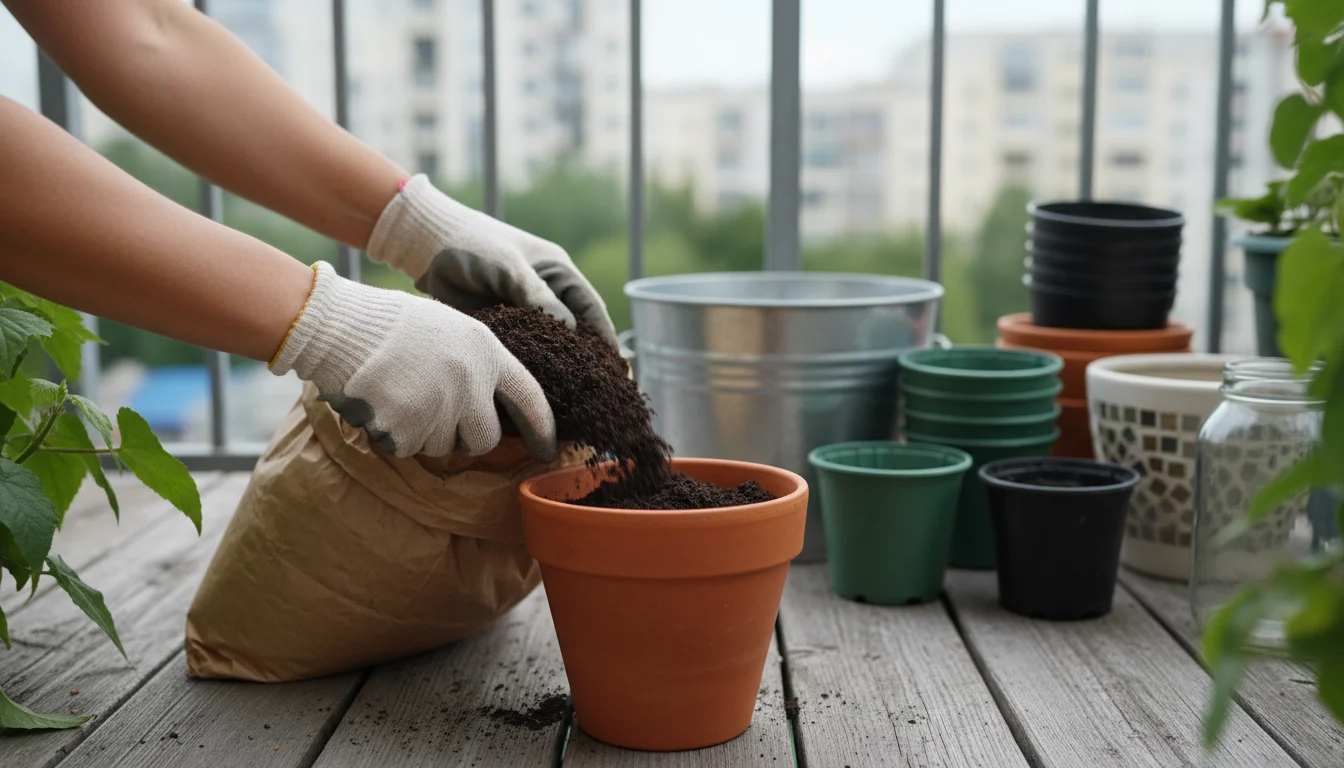
Container Selection and the Foundation of Fragrance: Soil Basics
The success of your fragrant container garden heavily relies on appropriate containers and the correct soil mixture. These foundational elements ensure your aromatic plants thrive and produce their best scents.

Choosing the Right Containers
Your choice of container impacts plant health, aesthetic appeal, and even how well scents dissipate. You need to consider size, material, and drainage.
- Size Matters: Select containers large enough to accommodate the plant’s mature root system. Most herbs and smaller conifers prefer pots at least 8-12 inches in diameter. Larger plants, like some shrubby sages or bigger conifers, might require 14-18 inch pots. Adequate space prevents plants from becoming root-bound too quickly, which stresses them and reduces their vigor and scent production.
- Material Options:
- Terracotta/Clay: These porous pots allow excellent air circulation to the roots and wick away excess moisture, reducing the risk of root rot. This makes them ideal for herbs like rosemary and thyme, which prefer drier conditions. However, they dry out faster, requiring more frequent watering.
- Plastic/Resin: Lighter and less expensive, plastic pots retain moisture longer. This can be beneficial for plants that prefer more consistent moisture, but you must ensure excellent drainage to prevent waterlogging. Their lightweight nature makes them easy to move around your balcony.
- Glazed Ceramic: These offer a more decorative look and retain moisture well. Similar to plastic, they require careful drainage management.
- Wooden Planters: Offer a natural aesthetic and good insulation, protecting roots from temperature extremes. Line them to extend their lifespan and prevent rapid drying.
- Drainage Holes are Non-Negotiable: Every container MUST have drainage holes at the bottom. Without them, water collects, suffocating roots and leading to root rot. You cannot overstate the importance of drainage for container plants. If a pot lacks holes, you must drill them yourself. A single large hole is often better than many small ones for efficient water exit.
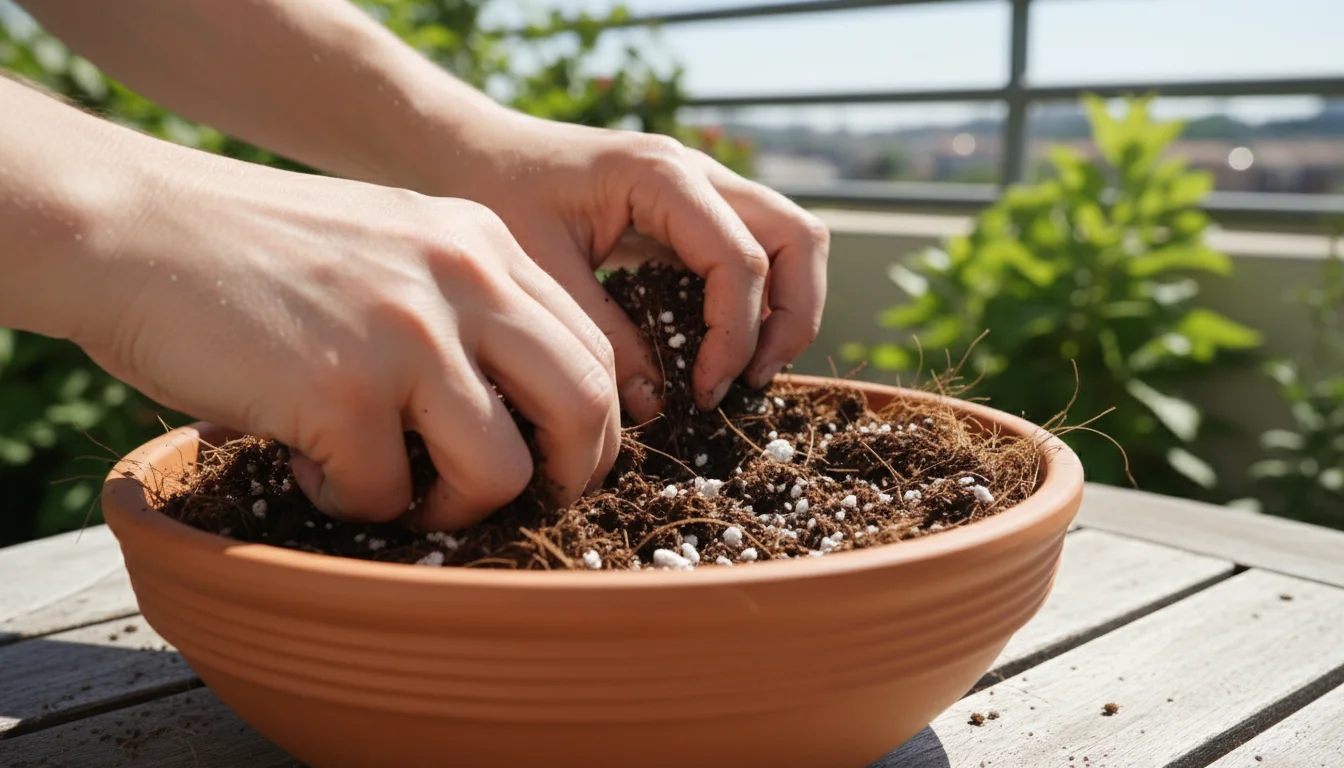
The Foundation of Fragrance: Soil Basics
The soil in your containers provides nutrients, anchors the plant, and controls water retention. For a healthy fragrant container garden, you need a high-quality potting mix. “Drainage” refers to how easily water moves through the soil. Good drainage means water flows through quickly, preventing the soil from becoming waterlogged. Good soil provides aeration for roots and prevents compaction.
- Use Potting Mix, Not Garden Soil: Garden soil becomes compacted in containers, restricting root growth and drainage. Potting mix, specifically formulated for containers, is lighter and provides better aeration and drainage. It typically contains a blend of peat moss or coco coir, perlite or vermiculite, and composted materials.
- Enhance Drainage: For many aromatic herbs, especially those preferring drier conditions, you can further enhance drainage. Mix in an additional 10-20% perlite or coarse sand (not fine play sand, which can compact) to your potting mix. This improves the flow of water and prevents soggy roots, which are detrimental to scent production and plant health.
- Nutrient Content: Good potting mixes often contain a slow-release fertilizer or enough nutrients to get your plants started. If you start with a generic mix, consider incorporating a balanced slow-release granular fertilizer at planting time, following package directions.
- pH Levels: Most aromatic herbs prefer slightly acidic to neutral soil (pH 6.0-7.0). Quality potting mixes usually fall within this range. If you suspect an issue, you can purchase an inexpensive soil pH test kit.
By carefully selecting your containers and providing an optimal potting mix, you create the ideal environment for your fall sensory garden plants to flourish. Healthy plants produce stronger, more vibrant scents, giving you the best possible aromatic experience.

Planting Your Scent-scape for Maximum Impact
Once you select your containers and prepare your soil, the actual planting process is straightforward. However, a few key steps ensure your aromatic plants establish well and produce their best fall fragrances.
- Gather Your Supplies: You need your chosen containers, fresh potting mix (with added drainage if necessary), your selected fragrant plants, a small trowel or scoop, and a watering can.
- Prepare the Container:
- Cover the drainage holes with a piece of landscape fabric or a coffee filter. This prevents soil from washing out but still allows water to drain. Avoid placing rocks or broken pottery at the bottom, as this does not improve drainage and actually reduces the soil volume available for roots.
- Fill the bottom of the container with potting mix, leaving enough space for the plant’s root ball. You want the top of the root ball to sit about 1 inch below the rim of the pot after planting.
- Planting Individual Plants:
- Gently remove your plant from its nursery pot. If the roots are tightly coiled or circling at the bottom (root-bound), carefully tease them apart with your fingers or make a few shallow vertical cuts on the root ball. This encourages roots to grow outwards into the new soil.
- Place the plant in the center of the container, ensuring the top of the root ball is at the same level as it was in the nursery pot. Backfill around the root ball with more potting mix, gently firming it down to remove large air pockets. Leave about 1 inch of space between the soil surface and the rim of the container. This “headspace” allows for easy watering without overflow.
- Combining Plants in Larger Containers:
- When creating mixed containers, follow the “thriller, filler, spiller” principle for visual balance. For a scent-scape, adapt this:
- Thriller (Scent & Height): A tall, fragrant plant like an upright rosemary or a dwarf conifer for central height and a strong foundational scent.
- Filler (Scent & Volume): Medium-sized, bushy fragrant plants like sage or scented geraniums to fill out the middle ground and add complementary aromas.
- Spiller (Scent & Trailing): Trailing aromatic plants such as creeping thyme or trailing rosemary to spill over the edges, softening the container and bringing scent to lower levels, where it might be brushed more easily.
- Arrange plants before adding all the soil to visualize the final look and ensure adequate spacing. You want enough room for each plant to grow without becoming overly crowded, which can restrict airflow and encourage disease.
- When creating mixed containers, follow the “thriller, filler, spiller” principle for visual balance. For a scent-scape, adapt this:
- Watering After Planting: Thoroughly water your newly planted containers until water drains from the bottom. This settles the soil around the roots and eliminates any remaining air pockets. You need to provide this deep watering immediately after planting to help the plants recover from transplant shock.
- Strategic Placement: Place your newly planted containers in their final locations. Consider sun exposure, airflow, and accessibility for interacting with the scents. Position highly fragrant plants near entrances, seating areas, or along pathways where you are most likely to brush past them.
By following these steps, you give your fragrant container garden the best possible start. You create an environment where your aromatic plants can flourish, delivering the rich, comforting scents of autumn directly to your small space.
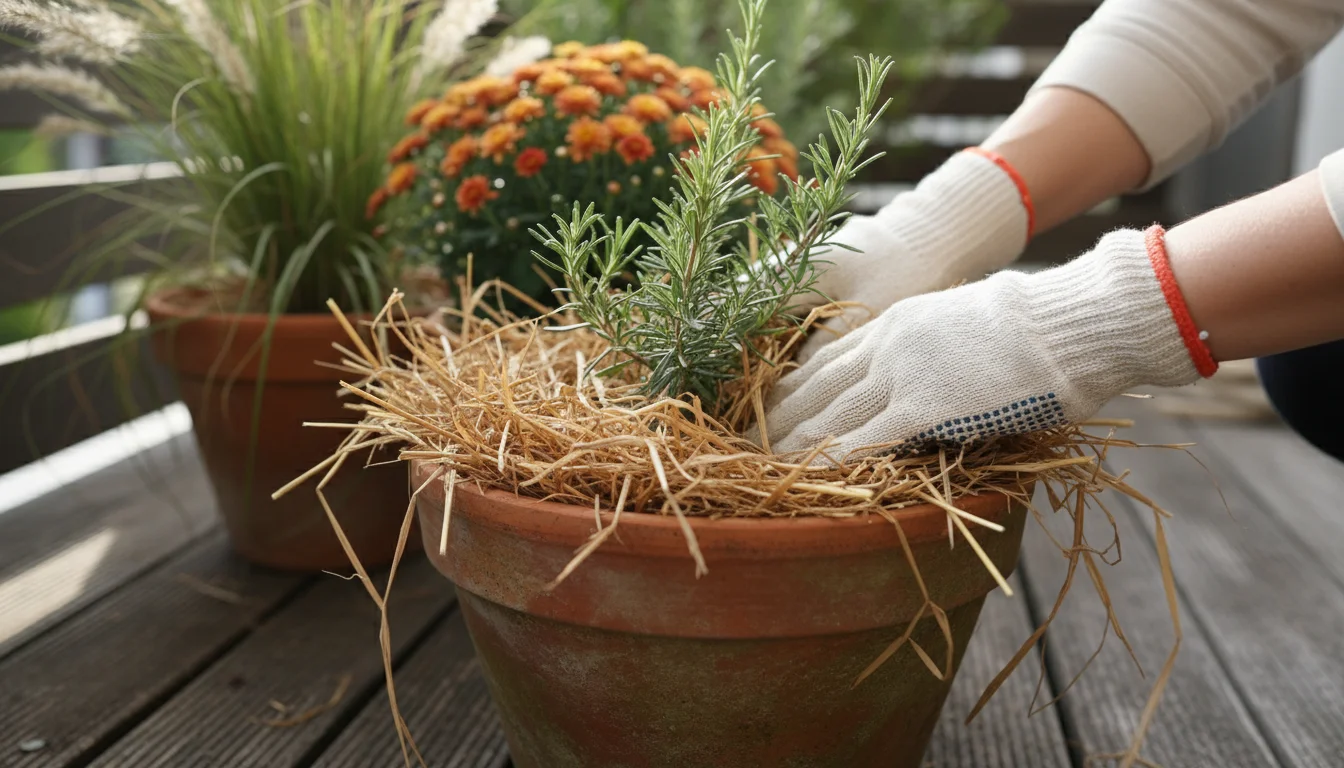
Nurturing Your Autumnal Aromas: Care Tips and Seasonal Extension
Maintaining your fall scent-scape involves specific care practices to ensure plants remain healthy and aromatic as temperatures drop. You can also take steps to extend the season of enjoyment.
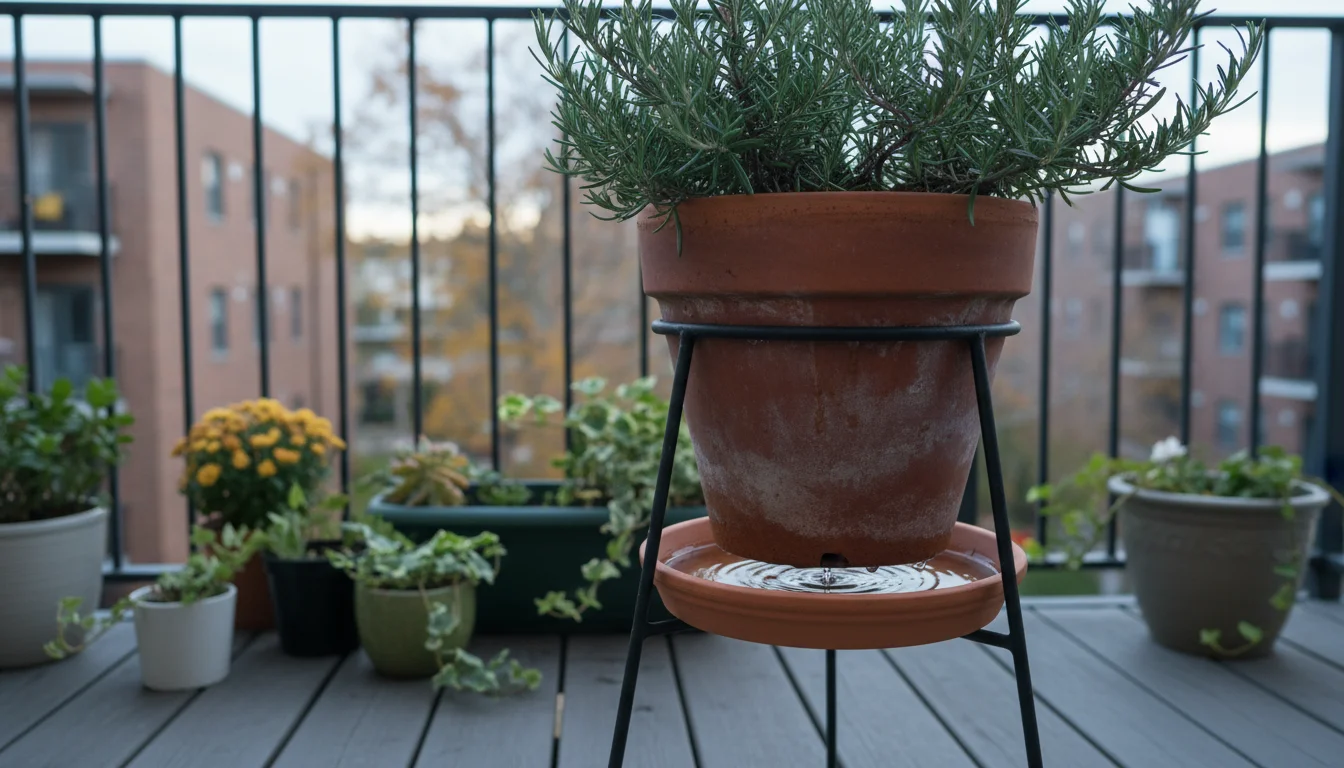
Essential Care for Your Fragrant Fall Garden
- Watering Wisely: Fall weather brings cooler temperatures, often reducing the need for frequent watering compared to summer. However, container plants still dry out faster than in-ground plants. Check the soil moisture daily by sticking your finger about an inch or two into the soil. If it feels dry, water thoroughly until water drains from the bottom. Avoid overwatering, which leads to root rot, especially for drought-tolerant herbs like rosemary and thyme. You must ensure good drainage at all times.
- Fertilization: Most fall-planted herbs and evergreens do not require heavy feeding in autumn. If your potting mix contained a slow-release fertilizer, that should suffice. If not, a very light application of a balanced liquid fertilizer (diluted to half strength) once every 4-6 weeks might be beneficial, especially for flowering plants like pansies. Avoid excessive nitrogen, which promotes leafy growth at the expense of flowers and sometimes fragrance.
- Sunlight Requirements: Ensure your plants continue to receive adequate sunlight as the sun’s angle changes in fall. Most aromatic herbs prefer full sun (at least 6 hours per day). If your balcony or patio becomes shadier in autumn, you might need to reposition containers to catch the available light. Insufficient light results in leggy growth and reduced vigor, potentially diminishing scent.
- Pest and Disease Monitoring: While fall generally sees fewer pests, continue to inspect your plants regularly. Look for common issues like aphids or spider mites. Address problems promptly with organic solutions like insecticidal soap. Healthy, well-cared-for plants are naturally more resistant to pests and diseases. Proper air circulation, achieved through good spacing and avoiding overcrowding, also helps prevent fungal issues.
- Pruning for Vigor and Scent: Light pruning benefits many aromatic plants. Pinch back leggy growth on herbs like sage and lemon balm to encourage bushier, denser growth, which often means more leaves and thus more scent. You can also lightly harvest herbs for culinary use, which stimulates new growth. Remove any yellowing or dead foliage to maintain plant health and appearance.
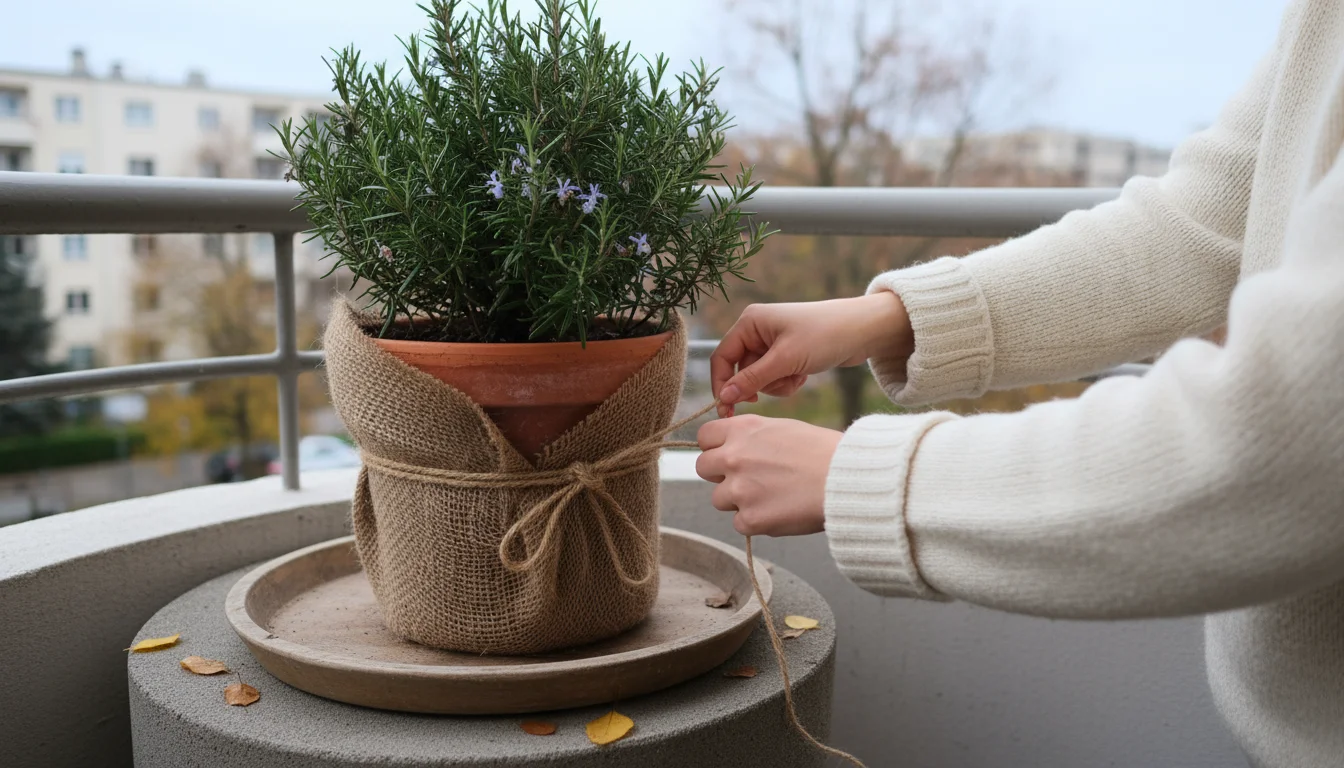
Extending Your Aromatic Season
You can prolong the enjoyment of your fall scent-scape even as winter approaches.
- Provide Shelter: As night temperatures consistently drop below freezing, move tender aromatic plants, such as scented geraniums, to a more sheltered location. This could be against a warm house wall, under an overhang, or even temporarily indoors during severe cold snaps.
- Insulate Containers: For hardier plants you leave outdoors, insulate their roots. You can wrap containers with burlap, bubble wrap, or place them inside larger, decorative pots. This protects roots from extreme temperature fluctuations, preventing freezing and thawing damage.
- Bring Indoors: Many aromatic herbs (rosemary, sage, thyme, scented geraniums) make excellent houseplants. Before the first hard freeze, bring them indoors. Ensure they receive bright light (a south-facing window is ideal) and reduce watering significantly. Continue to check soil moisture, but allow the top inch or two to dry out between waterings. Indoors, they continue to provide delightful fragrances throughout the winter, bringing the essence of your garden inside.
By implementing these care strategies, you ensure your fragrant container garden remains a vibrant, aromatic delight throughout the fall season and potentially beyond. You proactively manage plant health, extending the period you can enjoy your unique autumn scent-scape.
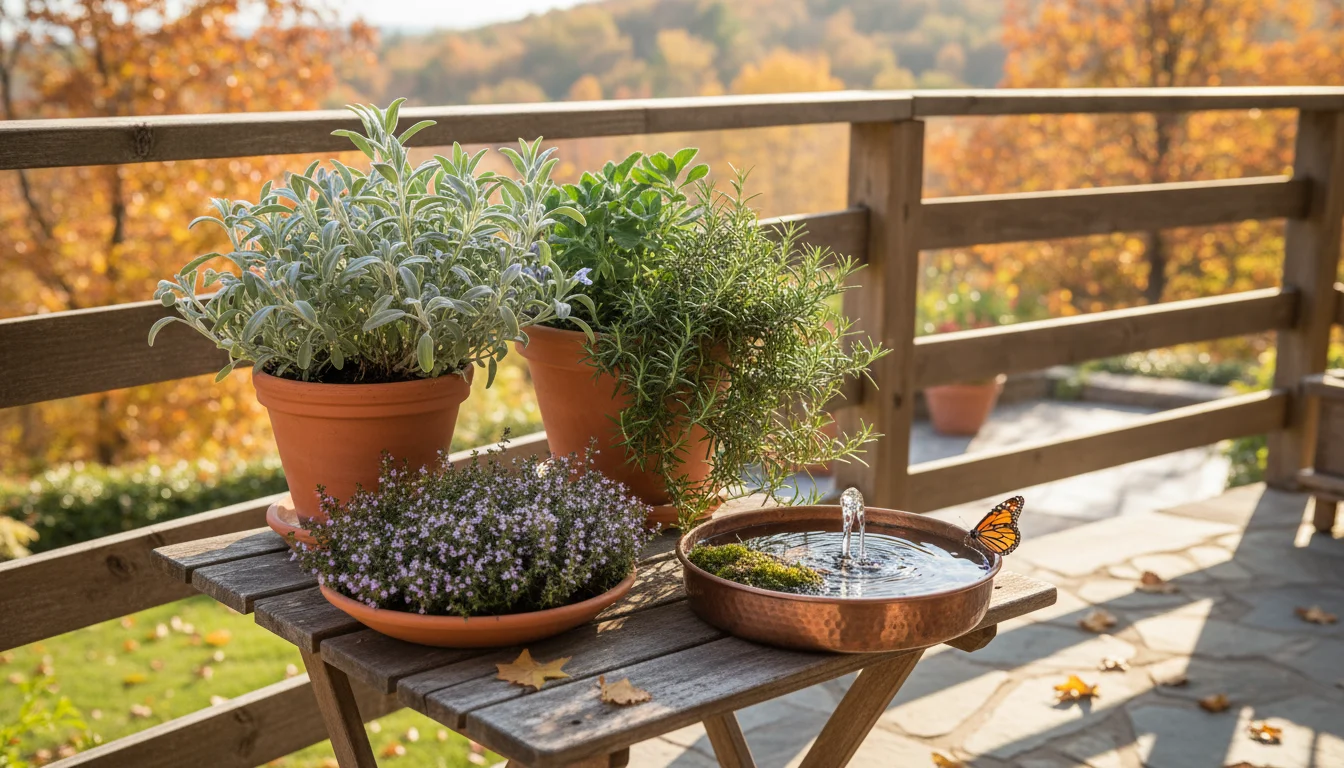
Sustainable Scents: Eco-Friendly Practices for Your Fragrant Garden
As a supportive and practical gardening coach, I encourage you to integrate environmentally conscious practices into your fall scent-scape. Sustainable gardening benefits the planet and often results in healthier, more resilient plants and a more enjoyable garden experience for you. You can make a significant positive impact even in a small container garden.
- Choose Native or Adapted Plants: While many popular aromatic herbs are not native, seek out varieties that are well-suited to your local climate. They require less water, fertilizer, and pest intervention once established. Local nurseries often highlight plants that thrive in your specific region. This reduces the resources needed to maintain your fall sensory garden.
- Source Locally: Purchase your plants and gardening supplies from local nurseries and garden centers. This supports local businesses, reduces transportation emissions, and often means you get plants already acclimated to your regional conditions. Local experts also offer tailored advice for your specific environment.
- Water Conservation:
- Efficient Watering: Water deeply and less frequently, rather than shallowly and often. This encourages deeper root growth, making plants more resilient.
- Morning Watering: Water in the early morning. This minimizes water loss due to evaporation and allows foliage to dry before nightfall, reducing the risk of fungal diseases.
- Mulch Containers: Apply a thin layer of organic mulch (like coco coir, shredded leaves, or small wood chips) to the surface of your container soil. Mulch helps retain soil moisture, suppresses weeds, and insulates roots from temperature fluctuations. This reduces your watering frequency significantly.
- Compost and Organic Matter:
- Enrich Your Soil: Incorporate high-quality compost into your potting mix. Compost improves soil structure, enhances drainage, and provides a slow release of essential nutrients. This reduces your reliance on synthetic fertilizers.
- Kitchen Scraps: If space allows, start a small worm composting bin (vermicomposting) on your balcony. It turns kitchen scraps into nutrient-rich “worm castings” for your containers. You gain a self-sustaining source of fertilizer.
- Avoid Chemical Pesticides and Fertilizers: For a healthy garden environment and your own well-being, opt for organic pest control methods and natural fertilizers. Healthy soil and proper plant care usually prevent most pest issues. If you do encounter pests, try hand-picking, insecticidal soaps, or neem oil before resorting to harsh chemicals. These eco-friendly choices protect beneficial insects, local wildlife, and your own health.
- Reuse and Repurpose:
- Containers: Repurpose old containers, buckets, or even household items into planters. Ensure they have adequate drainage holes. Clean used containers thoroughly before planting to prevent disease transmission.
- Potting Mix: You can often reuse potting mix from previous seasons if the plants were healthy. Amend it with fresh compost and a little new potting mix to replenish nutrients and improve structure.
- Embrace Biodiversity: While your focus is scent, consider incorporating one or two small pollinator-friendly plants if space allows. Even a few late-blooming flowers can provide nectar for visiting bees and butterflies, contributing to local ecosystems.
By consciously adopting these sustainable practices, you create a fall sensory garden that not only smells wonderful but also minimizes its environmental footprint. You cultivate a beautiful, aromatic space you can feel good about, knowing you actively contribute to a healthier planet.
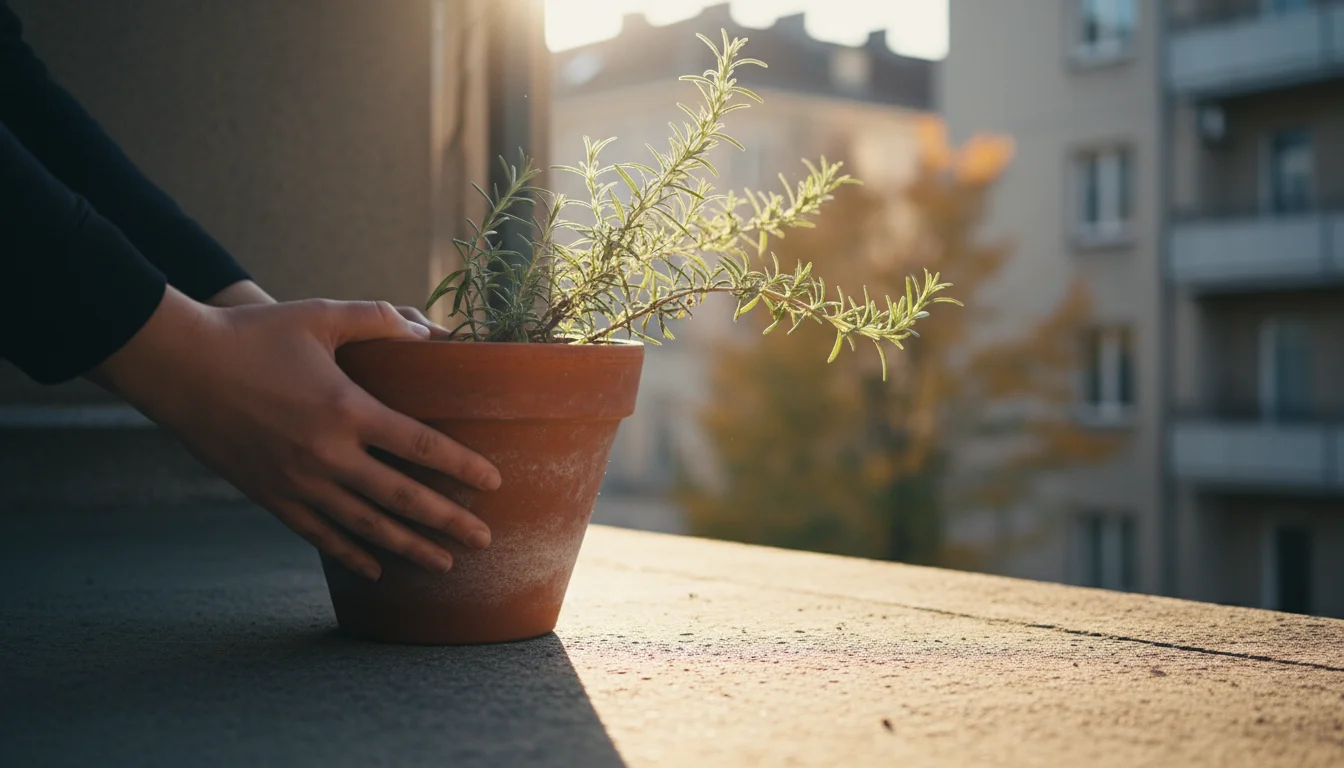
Troubleshooting Common Fall Scent-scape Challenges
Even experienced gardeners encounter challenges. Knowing how to identify and address common issues in your fall fragrant container garden ensures your aromatic display remains vibrant. You can quickly rectify problems and maintain a thriving scent-scape.
- Problem: Plants losing their fragrance or producing weak scents.
- Cause: Often due to insufficient sunlight. Aromatic plants, especially herbs, need ample sun to produce the volatile oils responsible for their scent. Overwatering or nutrient deficiencies can also stress plants and reduce fragrance.
- Solution: Assess your light conditions. Does your plant receive at least 6 hours of direct sun daily? If not, move it to a brighter spot. Check your watering routine; ensure soil dries out slightly between waterings. If plants appear generally weak, a light feeding with a balanced liquid fertilizer (diluted) might help, but avoid over-fertilizing. Remember, cooler fall temperatures can naturally reduce scent intensity for some plants compared to summer, but a healthy plant still offers good aroma.
- Problem: Leaves turning yellow or dropping.
- Cause: Yellow leaves often indicate overwatering or poor drainage, leading to root rot. It can also signify underwatering, nutrient deficiency (especially nitrogen), or simply the natural end of a plant’s seasonal life cycle (for annuals).
- Solution: First, check the soil moisture. Is it constantly soggy? Improve drainage by mixing perlite into the soil or ensuring your container has adequate drainage holes. Allow the soil to dry out between waterings. If the soil is consistently dry, increase watering frequency. For yellowing lower leaves on older plants, it might be natural senescence. If yellowing is widespread and uniform, consider a light fertilizer application.
- Problem: Leggy or spindly growth.
- Cause: Insufficient light is the primary culprit. Plants stretch towards the light, resulting in elongated stems and sparse foliage. Over-fertilization with nitrogen can also promote leggy growth at the expense of compact form.
- Solution: Move your containers to a location receiving more direct sunlight. Prune back leggy stems to encourage bushier growth. While pruning, you can often enjoy the released scent. Reduce any high-nitrogen fertilizer applications.
- Problem: Plants wilting despite regular watering.
- Cause: This can indicate either severe underwatering (soil completely dry) or, paradoxically, severe overwatering (roots rotting and unable to absorb water). Root-bound plants also wilt easily because their limited root space dries out rapidly.
- Solution: Check soil moisture deeply. If dry, water thoroughly. If soggy, you might need to unpot the plant, trim any rotting roots (they appear black and mushy), and repot in fresh, well-draining soil. If root-bound, repot into a larger container after gently loosening the root ball.
- Problem: Pests appearing on plants.
- Cause: Common pests like aphids, spider mites, or whiteflies find even container gardens attractive. Stress from poor growing conditions often makes plants more susceptible.
- Solution: Inspect your plants regularly. For small infestations, physically remove pests by hand or with a strong spray of water. For more persistent issues, use an insecticidal soap or neem oil spray, ensuring full coverage of the leaves, especially the undersides. You must address pest issues early before they spread and severely impact plant health.
You empower yourself to maintain a vibrant and fragrant fall scent-scape by understanding these common challenges and their solutions. Regular observation and prompt action keep your container garden healthy and your outdoor space filled with delightful autumn aromas.
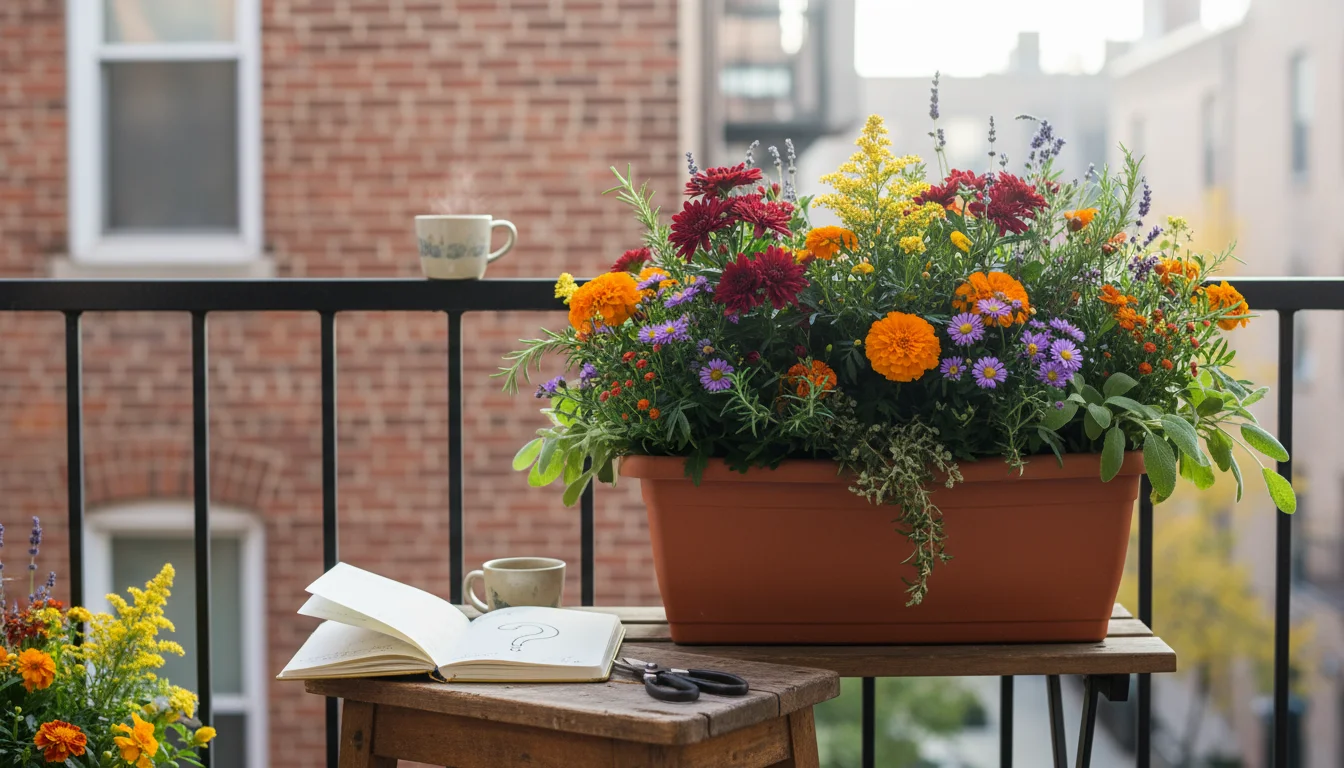
Frequently Asked Questions
What is a “scent-scape”?
A “scent-scape” refers to a garden designed to engage your sense of smell, creating an immersive aromatic experience rather than solely focusing on visual appeal. You intentionally select plants for their fragrance, creating a unique sensory environment.
Can I grow fragrant plants in containers all year?
Many fragrant herbs like rosemary, thyme, and sage are perennials and can survive winter in containers, especially in milder climates or with protection. You can also bring some tender aromatic plants, like scented geraniums, indoors to enjoy their fragrance throughout the colder months, extending your fall sensory garden’s enjoyment.
What makes certain plants more fragrant in fall?
Several factors contribute. As temperatures cool, some plants, particularly evergreens and certain herbs, can concentrate their aromatic oils. The crisp, clean air of autumn also carries scents more efficiently. Additionally, the lack of overwhelming summer floral scents allows the subtler, earthier, and spicier notes of fall plants to truly stand out.
How do I make my small fall sensory garden last longer?
You extend your garden’s lifespan by choosing hardy, cool-season aromatic plants, providing proper watering and adequate sunlight, and insulating containers as temperatures drop. Bringing tender plants indoors before the first hard freeze also significantly prolongs your enjoyment of their fragrance. Consider multi-season plants that offer interest beyond fall.
Is it expensive to create a fragrant container garden?
No, you can create a beautiful and aromatic garden on a budget. Start with small starter plants or propagate herbs from cuttings. Repurpose existing containers or seek out affordable options. Focused plant selection on a few key aromatic varieties provides significant impact without a large investment. You prioritize scent and strategic placement over quantity.
For trustworthy gardening information, visit: Iowa State University Extension — Yard & Garden, Washington State University Hortsense, University of Minnesota Extension, Penn State Extension — Trees, Lawns and Landscapes and Clemson University Extension — Home & Garden. These organizations provide expert, research-based advice for gardeners at all levels.
Disclaimer: This article is for informational purposes only and is not a substitute for professional gardening advice. Always consult local extension services or horticulture experts for region-specific guidance.

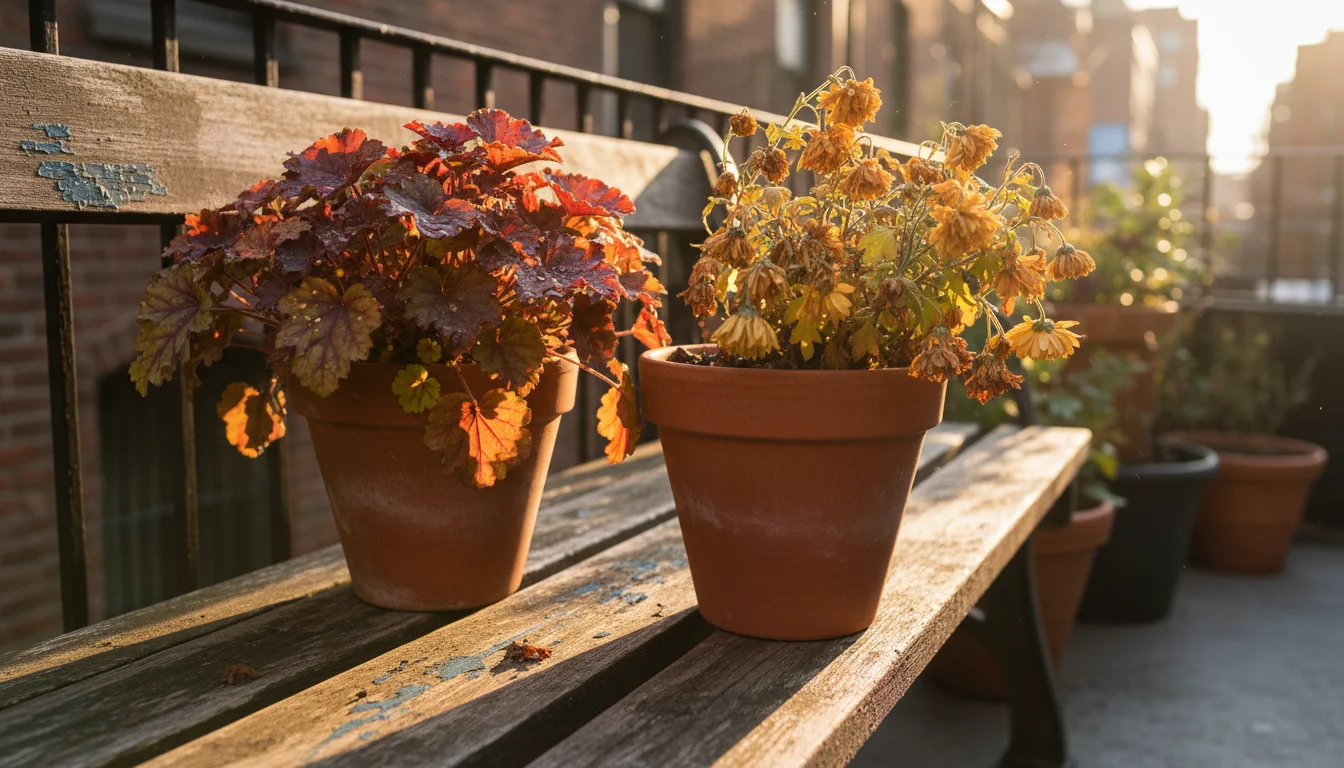
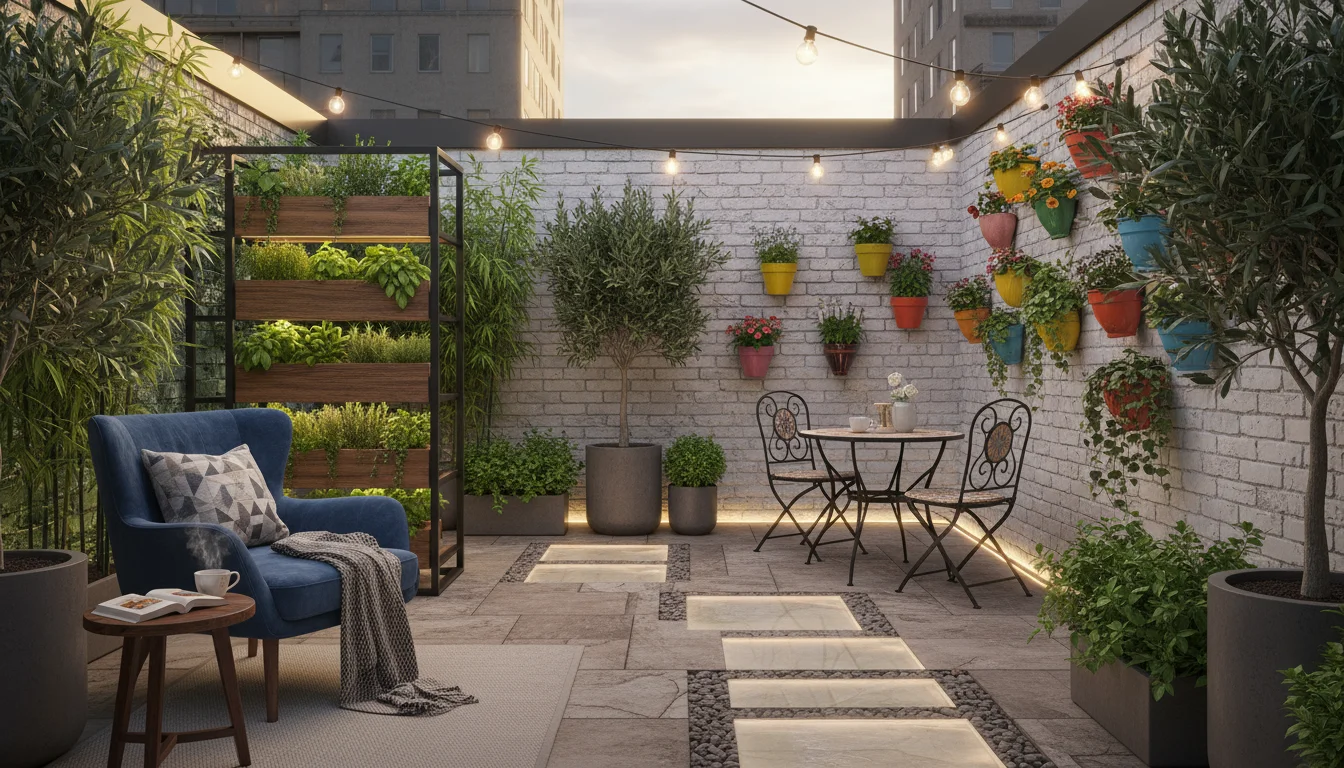
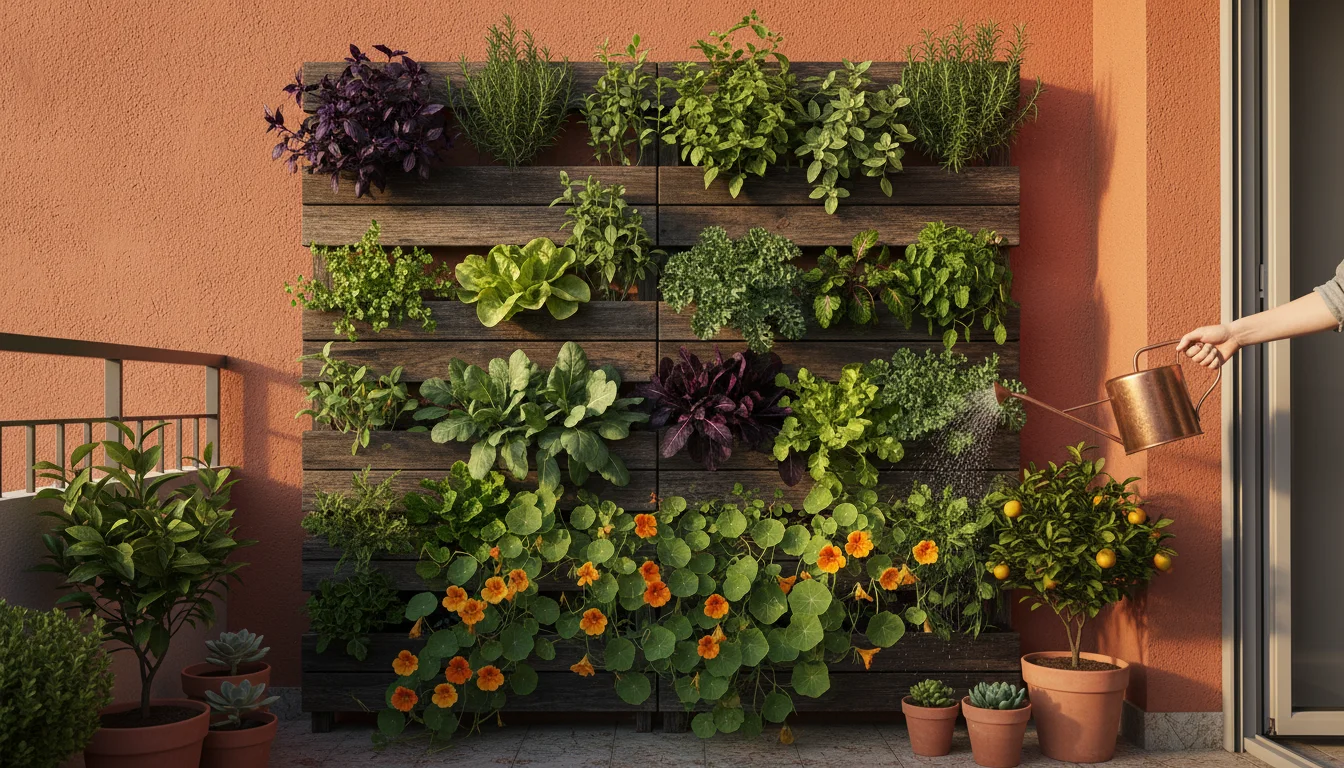
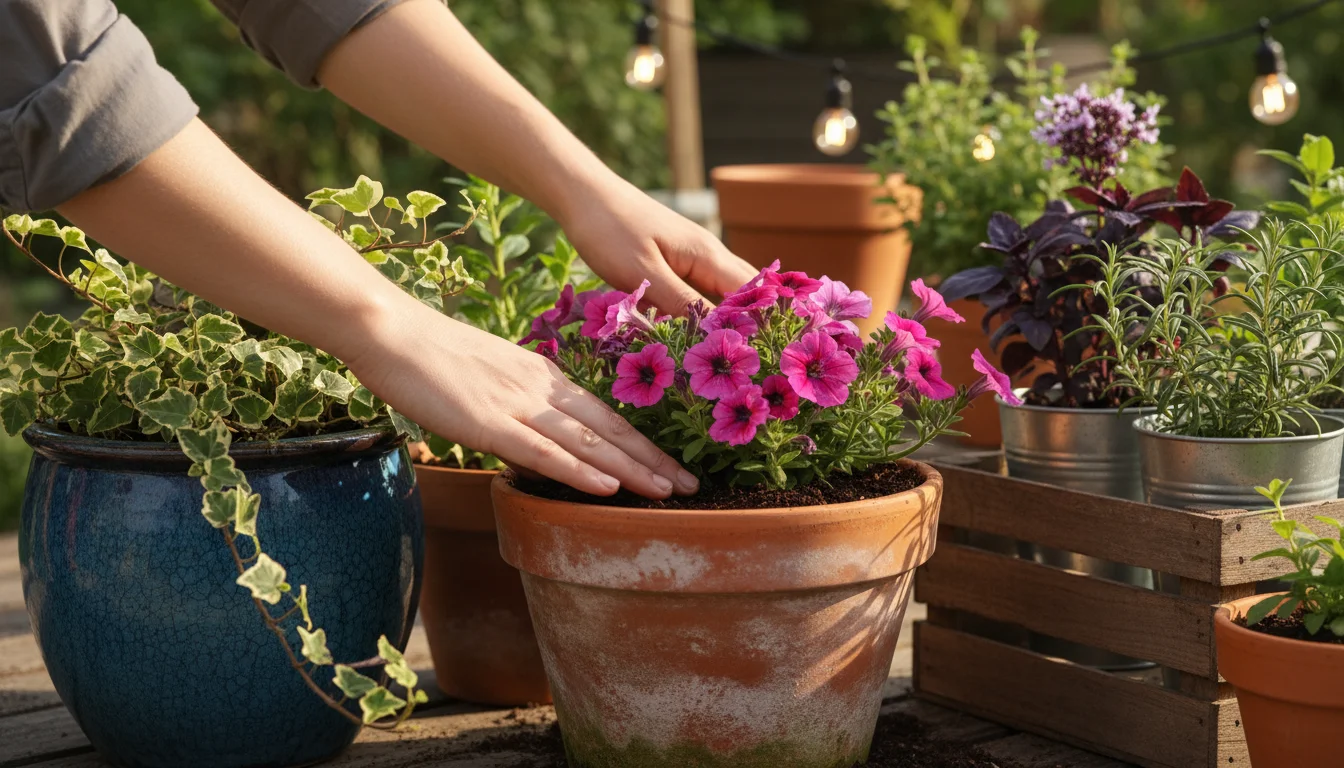
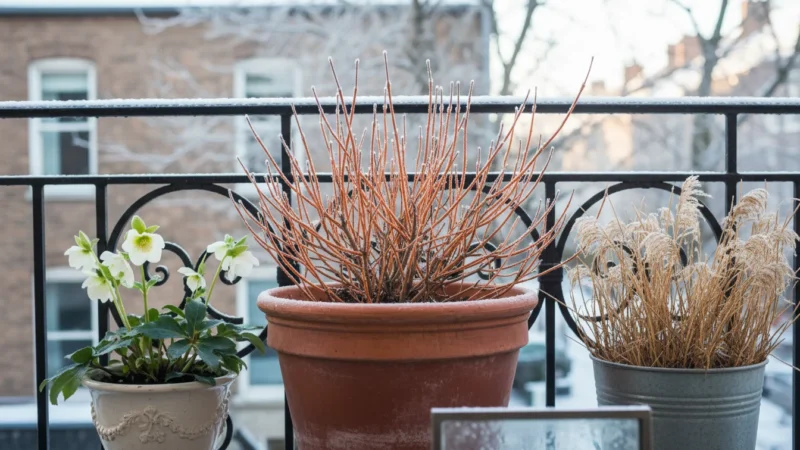


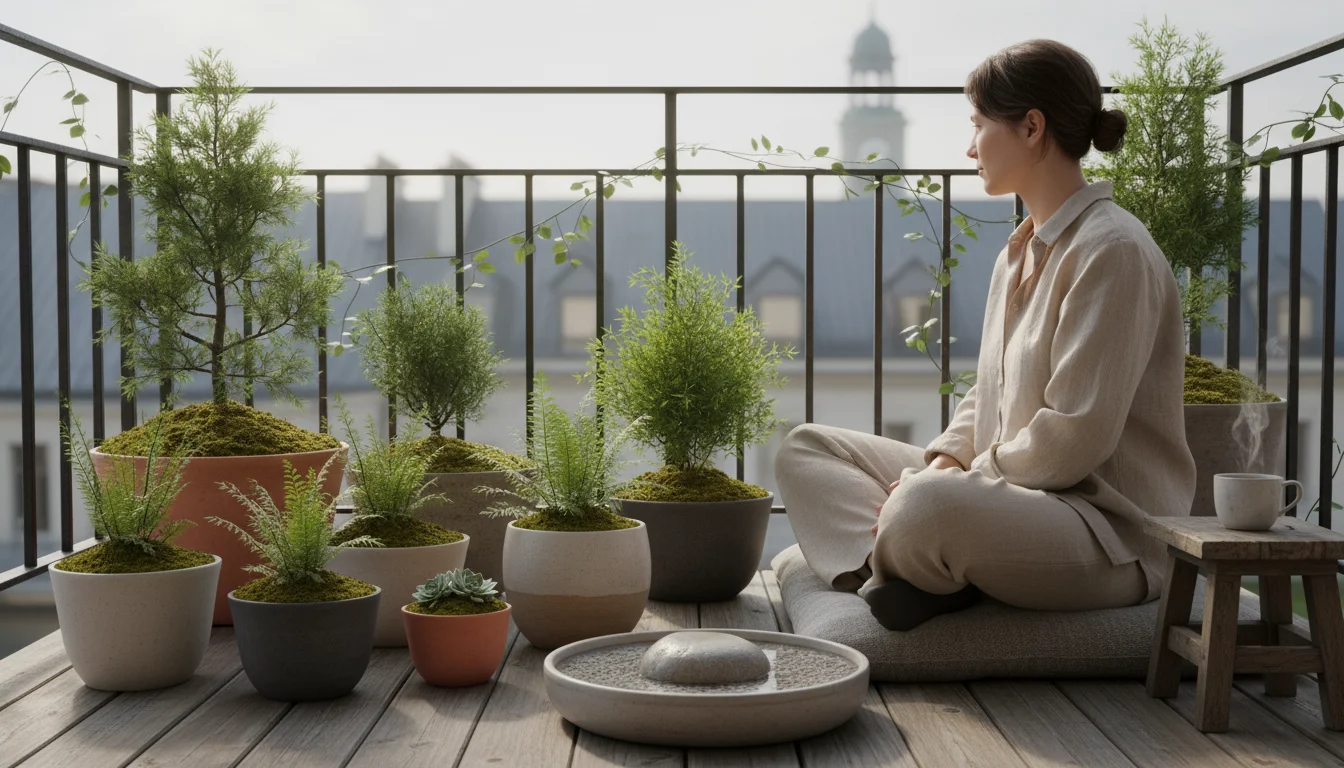
Leave a Reply